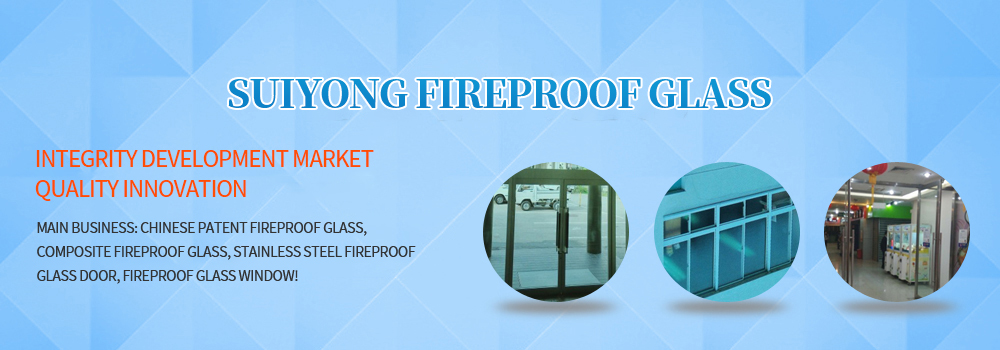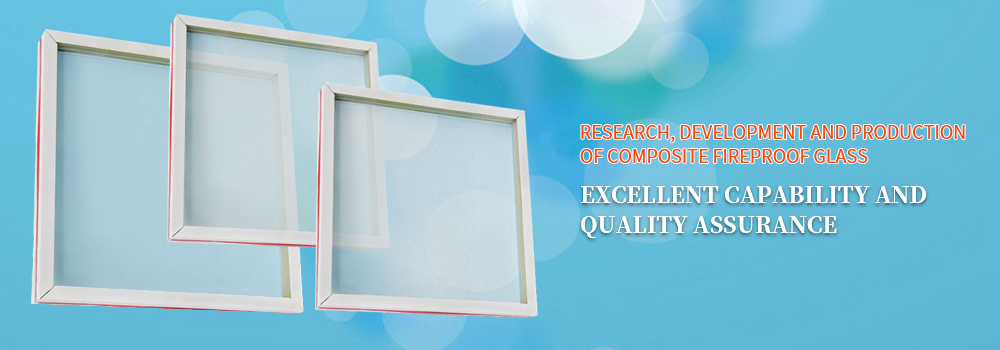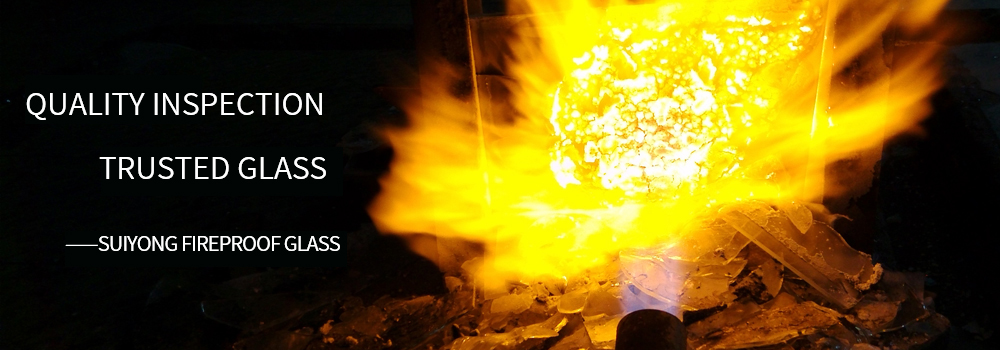 Welcome to Dongguan Suiyong Glass Technology Co., Ltd!
Welcome to Dongguan Suiyong Glass Technology Co., Ltd!Dongguan Suiyong fireproof glass technology Co., Ltd
Contact: Mr. Yu
Mobile: 136 0259 0190
Tel: 0755-27658310
Fax: 0755-27658310
EMAIL: 153478176@qq.com
Q Q:646193419
Address: plant 4, No. 28, Qisha Road, Qisha Industrial Zone, Shatian Town, Dongguan
- Structural division of fireproof glass
- Precautions for application of fireproof glass
- The types of laminated fireproof glass are introduced
- When winter comes, we need to know about fire prevention
- Composition and skill requirements of fire windows
- What are the common fireproof windows of fireproof glass?
- Glass fiber composite air duct integrates multiple functions
Classification and structure of fireproof glass
1、 Fireproof glass for construction is divided into composite fireproof glass and single fireproof glass according to structure.
Composite fireproof glass: it is a special glass composed of two or more layers of glass, or one layer of glass and organic materials, and meets the requirements of corresponding fire resistance rating. Monolithic fireproof glass: it is a special glass with single-layer glass structure and meets the corresponding fire resistance rating requirements.
According to the structural type, fireproof glass can be divided into: fireproof laminated glass, thin coated fireproof glass, single fireproof glass and fireproof wired glass. Meanwhile, according to the production process characteristics, the fireproof laminated glass can be divided into composite fireproof glass and pouring fireproof glass.
2、 Technical requirements for fireproof glass
The fire-resistant function of fire-resistant glass for construction is obtained by directly inlaying the fire-resistant glass in the wall hole or combined with the frame, and then inlaying it in the wall hole to make components according to gbl2513. It includes the determination of fire-resistant integrity, fire-resistant heat insulation and thermal radiation intensity. Meanwhile, the measurement of thermal insulation is based on the back fire surface temperature.
According to gbl5763.1-2001 (safety glass and fire-proof glass for construction), fire-proof glass for construction is divided into class A (fire-proof glass satisfying fire integrity and fire insulation requirements), class B (fire-proof glass satisfying fire integrity and heat radiation strength requirements) and class C (fire-proof glass satisfying fire-proof integrity requirements) According to the fire resistance rating, the three types of fireproof glass can be divided into grade I (≥ 90min), grade II (≥ 60min), grade III (≥ 45min) and grade IV (≥ 30min) . fire resistance integrity refers to the flame on the back fire surface of the test piece and continues to burn for 10s or more; during the test, when the flame or gas of the test piece appears from the holes and other gaps, the cotton pad ignition test shall be carried out, and the cotton pad shall be ignited, indicating that the test piece has lost its integrity (if the test piece collapses during the test, the same indicates that the test piece has lost its integrity).
Fire resistance and thermal insulation -- refers to the temperature rise of a single point at the temperature measuring point on the back fire surface of the test piece of 180 ℃ and the average temperature rise of 140 ℃.
Thermal radiation intensity -- refers to the critical radiant heat illuminance of 0.42w/cm2 at 3M from the back fire surface of the test piece, and the critical radiant heat illuminance of 3.35w/cm2 at an interval equal to 1.2 times its smaller scale (length or width) from the back fire surface of the test piece.
3、 Structure and working principle of fireproof glass
Composite fireproof glass (or fireproof laminated glass) It is made by bonding and compounding two or more single-layer flat glass with intumescent flame retardant cementitious agent; in the meantime, the pouring type fire-proof glass is made by first sealing the periphery of two or more single-layer flat glass with frame strip, and then filling fire-proof liquid through the pouring port, cementation and sealing; at room temperature and in the early stage of fire, the composite fire-proof glass is made of ordinary glass Flat glass has the same light transmission function and decoration function; after a fire, with the extension and expansion of the fire, the fire temperature rises, the fire interlayer of composite fire-proof glass expands and foams when heated, and the fire insulation layer with very thick structure plays the role of fire insulation and fire separation. However, composite fire-proof glass generally has small bubbles, cold resistance, poor light transmission and other problems, which affect its use The role of.
Thin coated fireproof glass is made by spraying fireproof transparent liquid on the surface of single-layer or multi-layer flat glass substrate and drying and curing. When thin coated fireproof glass meets fire, the fireproof maintenance layer will be heated and expanded, and the fire maintenance layer with fine structure will maintain the substrate glass to prevent the extension and expansion of fire disaster.



